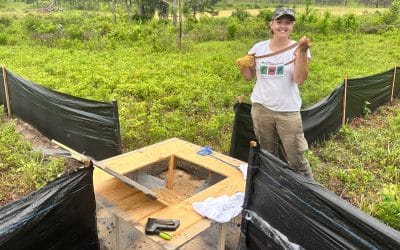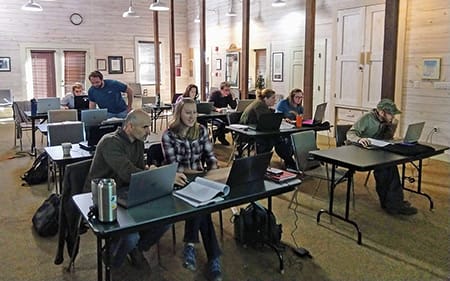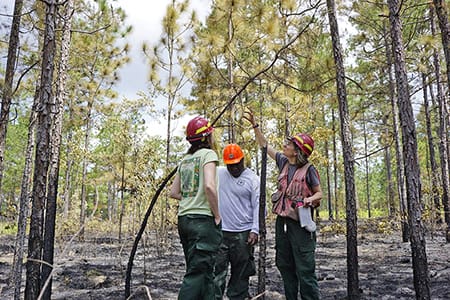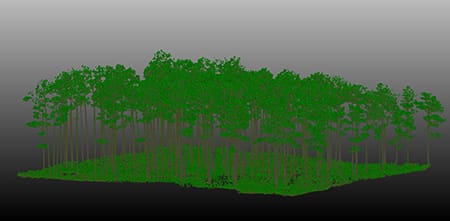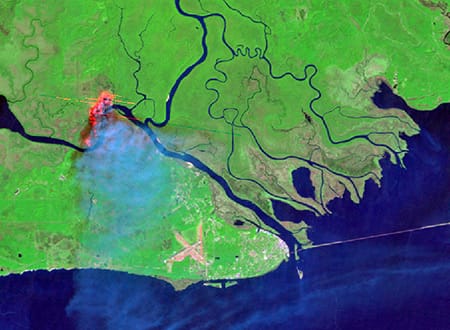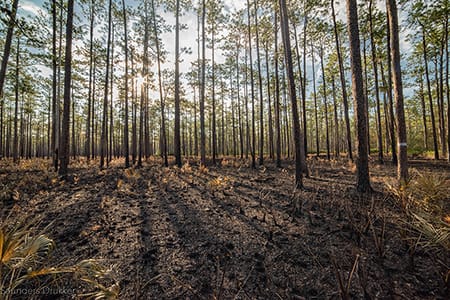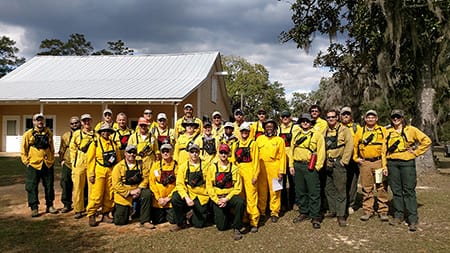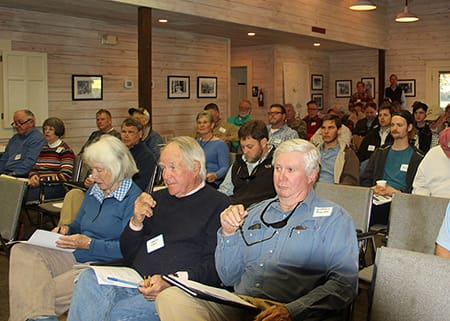By University of Georgia Master’s student Chris Terrazas
Feral hogs like to roam, but determining where they like to spend their time can help manage their eradication from the Red Hills landscape.
That was one focus of a three-year Feral Swine Control and Eradication pilot program in which GPS collars were placed on 13 pigs, seven males and six females. In all, 58,000 GPS locations were recorded which gave researchers the ability to map where they spend their time loafing, resting and bedding during different parts of the year in the hopes of giving trappers a starting point to more efficiently target and remove wild pigs.
In all, 114 resting and bedding areas were identified, but the results on the habitat type they prefer can help land managers target those areas, primarily with prescribed fire, to make them less appealing to pigs.

A map of Tall Timbers shows habitat where feral hogs spent time when forage opportunities were high.
Data show that pigs prefer dense vegetative cover when resting, especially between three to four feet off the ground. Pig beds were often found adjacent to fallen trees, root balls, or under dense muscadine thickets. This type of cover can offer pigs shade from the heat as well as protection for newborn piglets.
The good news for us is that these cover types can be recognized in the field when targeting wild pigs for placing bait and traps and implementing other eradication methods.
We can tell where pigs go to eat because there is plenty of evidence left behind by their destructive rooting behavior. Identifying where they rest is the next step in improving the chances of pigs encountering bait and being habituated to a future trap site.
From a larger spatial scale, we evaluated the GPS data to determine wild pig home range and resource selection to give us a broader sense of what habitat types pigs are using across the landscape.

A map of Tall Timbers shows areas where pigs preferred during the winter months when forage was low.
Male pigs used a much larger home range than females averaging 3,800 and 1,500 acres, respectively. We found that pigs strongly preferred to be in forested wetlands and fields while strongly avoiding upland pine communities.
One interesting finding from our study is that increasing time since fire in forested wetlands and upland pine habitats increased the probability of wild pigs using them.
Of course, forested wetland edges don’t burn at the same interval as a well-maintained pine savanna, but fire still occurred naturally in those habitats less frequently to maintain an open midstory. Completely excluding fire from those areas allowes dense vegetation to accumulate and provide more valuable thermal cover for wild pigs.
Not only does understanding this relationship allow us to better target pigs, but it also shows key insights into ways we can manipulate bottomland habitats to reduce the risk of wild pig use.
The analysis led to habitat suitability maps based on two seasons that represent forage availability for wild pigs.
These maps are available to landowners only in the Red Hills region for their own properties to help them highlight key areas for future wild pig monitoring and removal. Contact us if you are interested.






